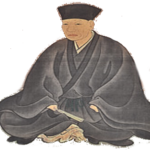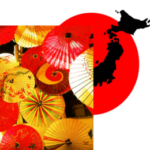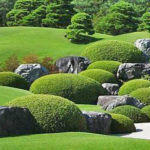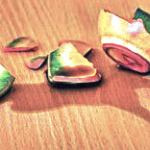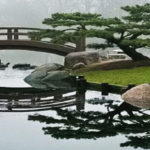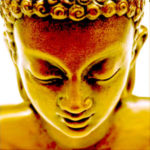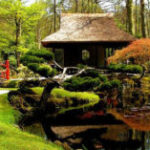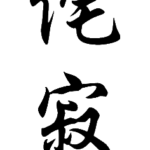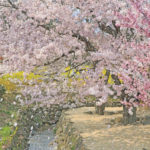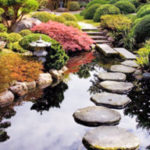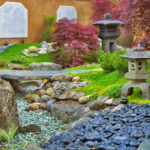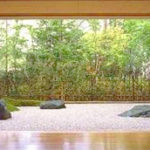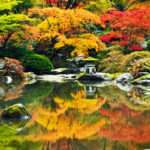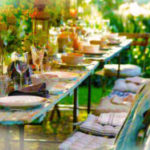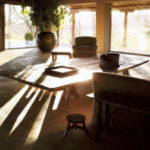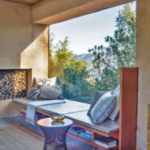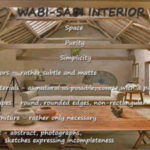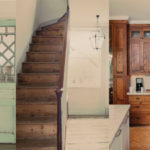When you search for information about wabi-sabi history or where it actually came from, you will almost always come across a link to 16th-century Japan and the legend of the tea master Sen no Rikyū. Rikyū is indeed honoured by the Japanese and considered to be maybe the first person to understand the core of this culturally-philosophical direction. And certainly, his approach to the aesthetics of natural simplicity greatly developed new forms of Japanese architecture, garden design, fine and applied arts. But he is definitely not someone who one day decided to create wabi-sabi from the ground up.
Buddha
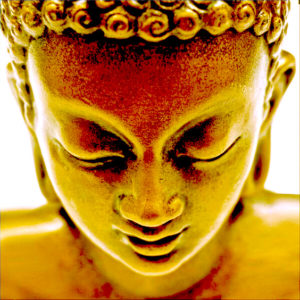
The complete beginning of the wabi-sabi nascency, of course, cannot be precisely dated. Wabi-sabi is based on Zen Buddhism, it is its specific expression. That is why it is sometimes stated that the primordial beginning dates back to 563 BC when Prince Siddhartha Gautama – later known to us as Buddha – found compassion for human suffering and gave up on the material world. Now, the history of Buddhism and Zen Buddhism should follow. But we’re going to abridge it and skip a few centuries later:
Tea ceremony
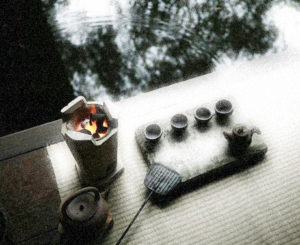 From the end of the 12th century, Zen Buddhism has begun to spread from China to Japan. At the beginning of the thirteenth century, the art of the tea ceremony also developed in Japan, mainly thanks to Buddhist priests.
From the end of the 12th century, Zen Buddhism has begun to spread from China to Japan. At the beginning of the thirteenth century, the art of the tea ceremony also developed in Japan, mainly thanks to Buddhist priests.
Over the following two centuries, the tea ceremony developed in the most typical way for practising Zen philosophy. But at the same time also in a social form that combines the skills needed in architecture, interior design, garden design, floral arrangements, painting, food preparation and acting. Plus the tea master had to handle incorporating the present guests into a peaceful art event.
The tea room in the 15th century and the beginning of the 16th century was used for Japanese traders similar as recently in our world the golf courses. There were business contracts negotiated there. Consolidation and disruption of political alliances. Expensive materials, Chinese richly decorated ceramics, were used there. Overall, it was the aesthetics of opulence and exaggerated ornamentalism, mostly originating in China. Tea was actually taken as a sort of entertainment for the elite.
Murata Jukō
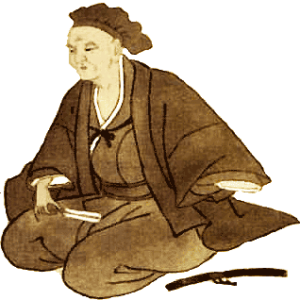 Already at the end of the 15th century, the Zen monk Murata Jukō began to rebel against the existing rules of the tea ceremony. By, for example, opening access to the tea ceremony even for ordinary people. He ended this period of tea ceremony as a certain extravagance for the chosen ones. He also began to use ordinary unruly ceramics made by local people. This is also why is Jukō mentioned as the first known tea master of wabi-sabi.
Already at the end of the 15th century, the Zen monk Murata Jukō began to rebel against the existing rules of the tea ceremony. By, for example, opening access to the tea ceremony even for ordinary people. He ended this period of tea ceremony as a certain extravagance for the chosen ones. He also began to use ordinary unruly ceramics made by local people. This is also why is Jukō mentioned as the first known tea master of wabi-sabi.
Sen no Rikyū
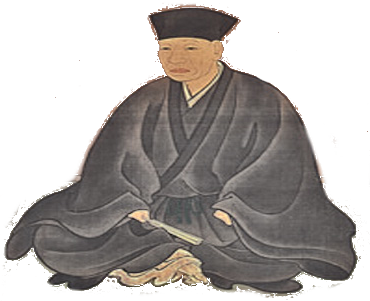 A hundred years later – in the 16th century – we are already getting to the most famous figure of wabi-sabi – the tea master Sen no Rikyū (1522-1591), under which the wabi-sabi reached its peak. Frequently mentioned is the legend of Sen no Rikyū, which in its own simplicity describes the principle of wabi-sabi.
A hundred years later – in the 16th century – we are already getting to the most famous figure of wabi-sabi – the tea master Sen no Rikyū (1522-1591), under which the wabi-sabi reached its peak. Frequently mentioned is the legend of Sen no Rikyū, which in its own simplicity describes the principle of wabi-sabi.
The legend of Sen no Rikyū
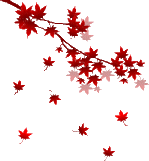 Sen no Rikyū was a young man who wanted to learn the art of the tea ceremony. So he went to the famous tea master Takeno Jōō, who instructed him to clean up and rake up a garden full of leaves as an entrance exam. After its thorough work, Rikyū checked the flawless and perfect appearance of the garden, but before he showed it to his master, he shook a tree – probably the Japanese Red Maple tree – and several beautifully coloured leaves fell on the ground.
Sen no Rikyū was a young man who wanted to learn the art of the tea ceremony. So he went to the famous tea master Takeno Jōō, who instructed him to clean up and rake up a garden full of leaves as an entrance exam. After its thorough work, Rikyū checked the flawless and perfect appearance of the garden, but before he showed it to his master, he shook a tree – probably the Japanese Red Maple tree – and several beautifully coloured leaves fell on the ground.
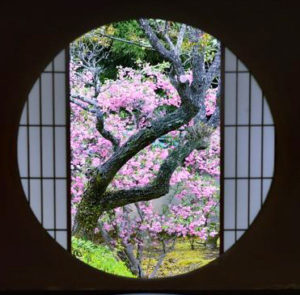
According to another variant of the story, it was a blooming Sakura and Rikyū shook a tree to drop a couple of flowers. I don’t know, but we have a Japanese cherry tree in our garden. When it blooms, it’s really beautiful, but the flowers are falling in a big way by themselves without shaking the tree. However, this story to a certain extent essentially characterizes wabi-sabi – in the beauty of imperfection, transience and incompleteness.
There‘s a similar story about how Rikyū many years later rebuked his son – the future student of the art of the tea ceremony – for cleaning up a garden too perfectly.
Well, it’s a legend, and it sounds slightly made up. But this was in the 16th century. A century that wasn‘t very pretty. Neither in Asia nor in Europe. It was a time of constant war and cruelty, but also a period of the flowering of arts. Even the art of Japanese tea ceremonies.
Rikyū, the greatest of the tea masters
Rikyū became a tea master and one of the greatest at that. His approach to the aesthetics of simplicity has developed new forms of Japanese architecture, garden design, fine and applied arts.
But back to reality, Japan, 16th century. Rikyū became famous and respected in his lifetime. It worried his superior and patron, Hideyoshi, so much so that he ordered the seventy-year-old tea master Rikyū to commit ritual suicide (Harakiri).
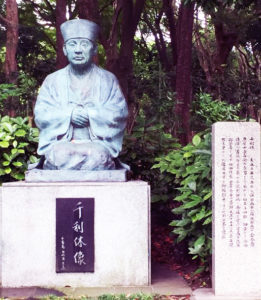
Harmony, respect, purity and tranquillity are still the bases not only of the tea ceremony. Indeed, the Rikyū himself is even in these days revered by the Japanese and considered to be the first to understand the core of the cultural and philosophical direction of wabi-sabi – the art of finding beauty in imperfection, weighing every moment in its transience, honouring the authenticity. Wabi-sabi is interpreted as “the wisdom of natural simplicity“.



